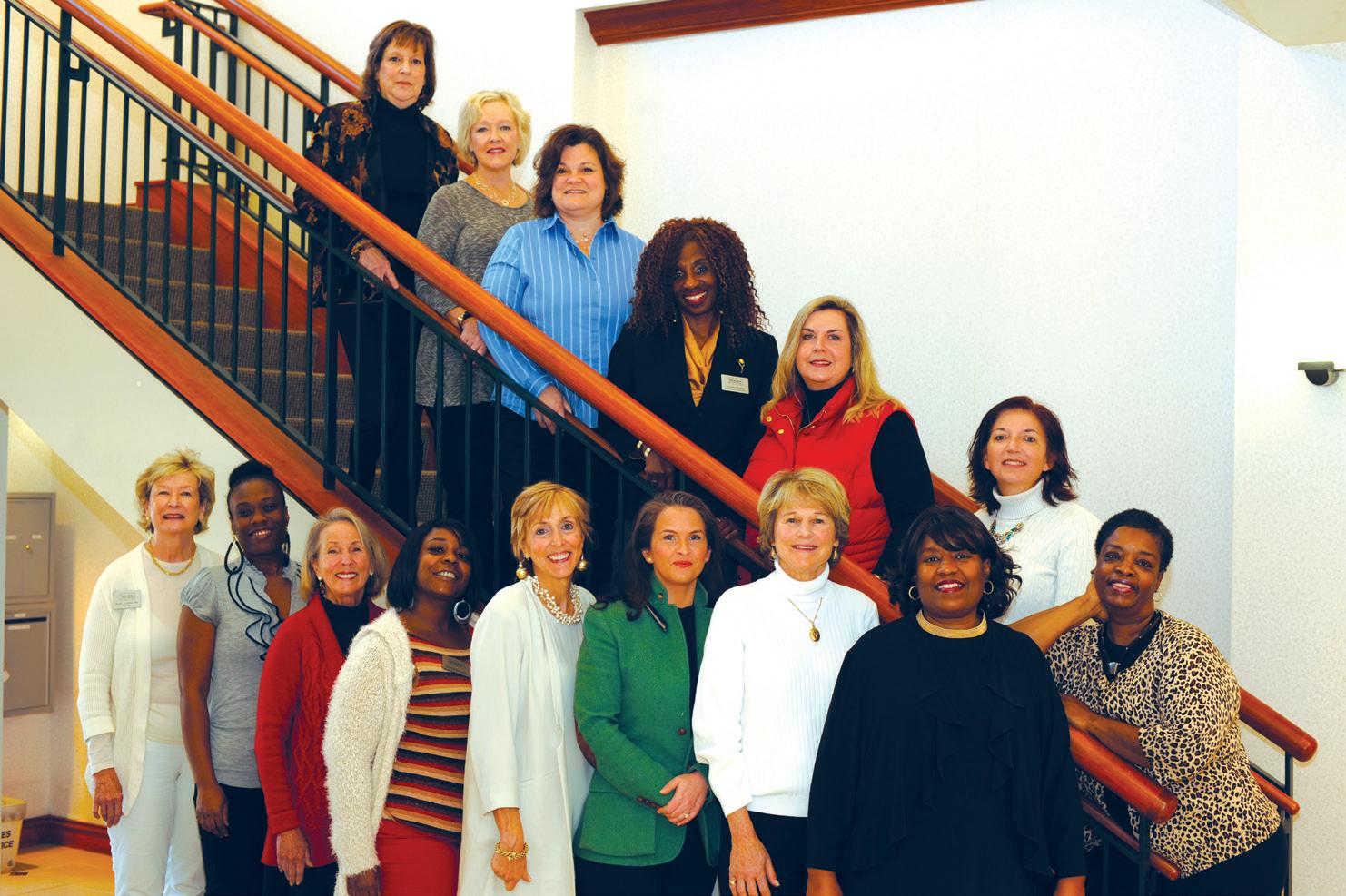
4 minute read
Navigating the ATL
Travel easily through Atlanta's busy airport
•
Hartsfield-Jackson Atlanta International Airport is large and busy, a hub for travelers who are going across the country or around the world. For some older adults, it can be intimidating to navigate the bustling terminals, especially during the holiday season.
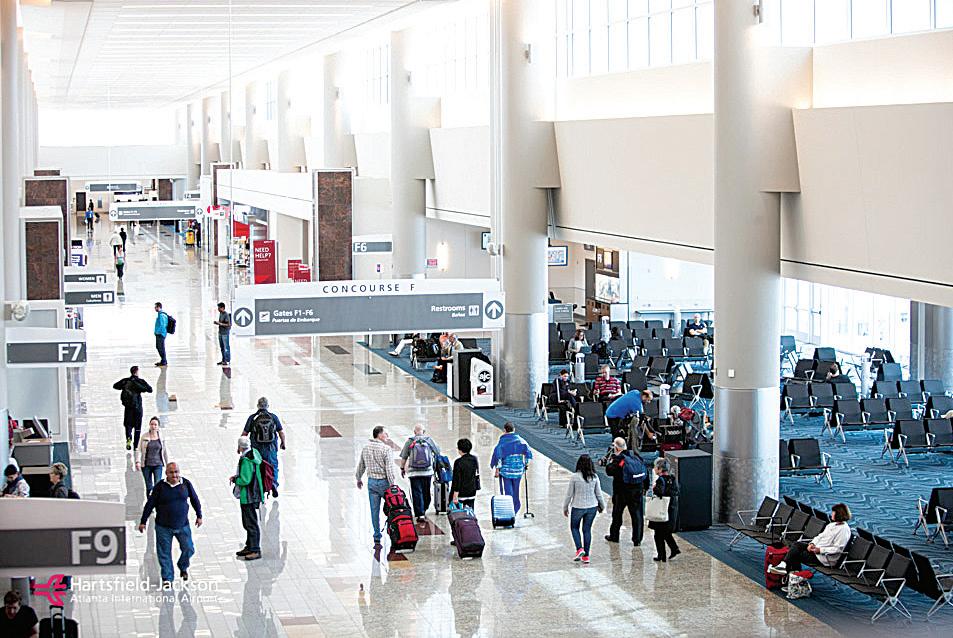
After all, any airport that serves an average of 285,000 passengers a day can be much like a small city. And in many ways, it is.
“I know the airport can be scary and imposing because of the sheer size of it,” said Director of Guest Relations Steve Mayers.
But, Mayers says, it can also be cozy, because of its multiple smaller concourses and many areas that include works of art and museumlike exhibits. At every juncture, there are plenty of restaurants and shops with friendly staff eager to serve patrons.
It turns out that thinking about seniors and their ability to maneuver the busiest airport in the world is far from a new concept. For Mayers, it’s his job.
Three years ago, the Transport Research Board released a study on the Impacts of Aging Travelers on Airports. A main reason for the study was the increase in the number of travelers over age 65. The post WWII ‘baby boomer’ generation had started to retire, and they definitely like to travel.
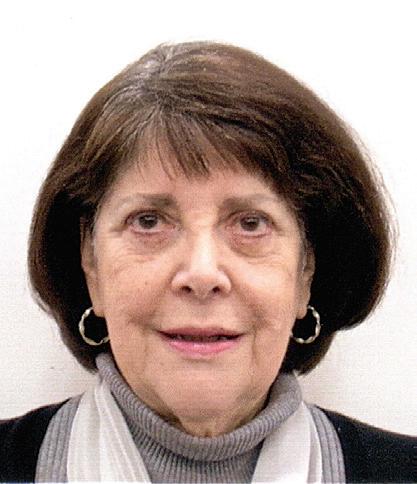
What’s more, boomers are not your typical seniors.
According to the report, “It is also expected that the proportion of older travelers choosing to fly will increase as a result of increased affluence and education levels.” These retirees are a far cry from the outdated image of old folks sitting on the front porch.
The report also states: “Many younger seniors are more capable of dealing with the new technology than their older counterparts.”
Travelers who are familiar with technology find it easier to navigate transportation hubs. Maps, flight updates and more info can be found on HartsfieldJackson’s website, atl.com. The Atlanta airport also has an easyto-use app, iFlyATL, available for Android and iPhone.
Mayers offers several suggestions for HartsfieldJackson planning, based on any traveler’s general health and wellness. For example, “Don’t wait until you arrive at the busiest airport in the world to ask for a wheelchair,” he said.
“For wheelchairs or other help, we ask that you plan ahead, contact the airline and let them know you’ll need a wheelchair or some type of assistance to get from point A to point B,” said Mayers.

“Please do that when purchasing your ticket,” he added. “Showing up at the airport and then requesting help may be challenging.” There’ll always be a wheelchair, but it might arrive too late to catch the intended flight.
Like so many things in life, planning ahead will help alleviate most miscommunication glitches.
“Also, if there are seniors with opinions, we’re interested in knowing how we can improve travel plans,” said Mayers. “Anyone
Matters of Security
can call me and ask if we’ve considered researching such and such. If we can help, we will.”
In fact, he says it was Atlanta community input that helped arrange for an adult changing station at Concourse
F. Mayers said they had the room to implement such a plan and knew it would help those getting ready for an extended international flight. The facility is also applicable for adults and children with disabilities.
Mayers says that at HartsfieldJackson, he and his team look forward to community input from everyone, and especially from senior travelers. To reach Mayers directly, email GuestRelations@ ATL.com or call 404-383-2280.
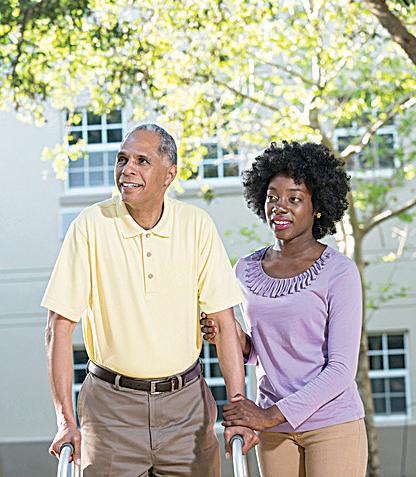
Travelers are expected to provide TSA (Transportation Security Administration) with medical documentation to describe specific conditions, such as an implanted metal device. Questions or concerns about traveling with an implant or certain disabilities may be handled by contacting TSA Cares: 855-787-2227.
Many seniors may not realize the TSA Cares helpline is there to provide guidance to travelers with disabilities, medical conditions and other special circumstances. They can help with additional assistance during security screenings.
Remember to call 72 hours prior to traveling with questions about screening policies, procedures and what to expect at the security checkpoint. If not, a TSA officer or supervisor can offer on-the-spot assistance, but remember—it’s likely to take extra time.
This is especially important if traveling with oxygen or certain prescription medications. All fliers must undergo screening at the checkpoint either by technology or what is referred to as a “pat down.” An exception includes those with “pre-check” status. In addition, TSA officers may swab hands, mobility aids, equipment and other external medical devices.
Passengers 75 and older can leave on their shoes and light jackets when going through security. However, TSA also has the right to ask any flier to undergo additional screening including visual or physical footwear inspection, including a trace detection testing of explosives concealed in footwear.
In the case of grown children attempting to help an elderly or frail parent to the gate, passes may be available, says Steve Mayers, Director of Guest Relations. Passes are issued at the discretion of the airlines.
Airline agents have full responsibility as to who can (or cannot) be escorted. Decisions are based on risk and passes can be denied,” explained Mayers. “There are no guarantees.”
Traveling with Pets
While every airline has different specific regulations, generally speaking, pets weighing less than 20 pounds—carrier included—and whose carrier fits securely under the seat can often fly as a carry-on, according to tripswithpets.com. Service animals fall under a different set of rules and regulations.
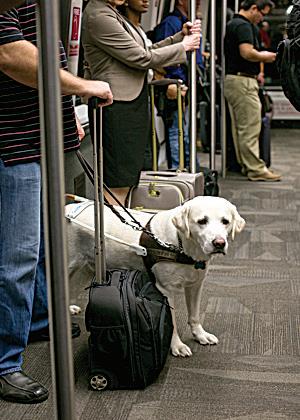
However, it’s a good idea to check with your airline prior to arriving at Hartsfield-Jackson, as rules can (and have) changed periodically.
In August of this year, Atlanta’s airport announced the completion of their seventh Service Animal Relief Area. According to Hartsfield-Jackson’s public relations office, Atlanta has the most animal relief areas of any airport in the U.S.—one in every terminal.

Each spacious Service Animal Relief Area is equipped with pet supplies and concrete and grassy turf areas as well as a groundlevel drinking fountain. In some cases, there’s even an artificial fire hydrant. All equipment is ADA accessible, including an automated entry door.
In addition, two outdoor dog parks at Hartsfield-Jackson offer relief and relaxation. In fact, Poochie Park is a 1,000-square-foot dog park at Domestic Terminal South. Headed overseas? An additional pet relief area is located on the arrivals level of the International Terminal, right outside door A1.










